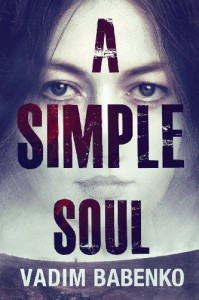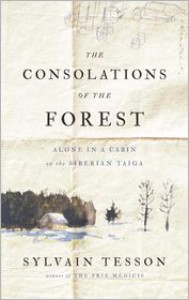Breaking Bad Habits Is Essential to Moving Ahead
by Sheila M. Trask
Human beings are natural problem solvers, able to develop and use tools to break through limitations. If we see an out-of-reach apple, we use a stick to knock it down. When we encounter calculations we can’t do in our heads, we employ a computer. We’re generally good at finding solutions.
So why do we feel so helpless when it comes to tackling our own unhealthy behaviors? What makes a bad habit so easy to establish and so hard to shake? Perhaps we don’t realize that helpful tools already exist. Here are five authors who explain the origins of the habits, addictions, and compulsions that plague modern people, along with a look at the emotional, cognitive, and interpersonal skills we can use to overcome them.
 Popular PsyBlog writer Jeremy Dean explores the science behind our everyday habits in his new book, Making Habits, Breaking Habits: Why We Do Things, Why We Don’t, and How to Make Any Change Stick (Da Capo Press, 978-0-7382-1598-3). Dean takes on common myths about forming and breaking habits, and explains why it may take twenty-one days to form a habit, or maybe forty, or maybe one hundred and twenty. Dean teases out the factors contributing to our habit-forming tendencies with a careful analysis of the studies that have examined the impact of intentions, actions, and will-power.
Popular PsyBlog writer Jeremy Dean explores the science behind our everyday habits in his new book, Making Habits, Breaking Habits: Why We Do Things, Why We Don’t, and How to Make Any Change Stick (Da Capo Press, 978-0-7382-1598-3). Dean takes on common myths about forming and breaking habits, and explains why it may take twenty-one days to form a habit, or maybe forty, or maybe one hundred and twenty. Dean teases out the factors contributing to our habit-forming tendencies with a careful analysis of the studies that have examined the impact of intentions, actions, and will-power.
It turns out there are many reasons those New Year’s resolutions are so hard to keep. The author leads us through it all in a friendly style that makes the minutiae of science accessible. And while he dedicates the bulk of the book to the foundation of habits, he also presents the latest evidence-based methods for overcoming them.
 Mindfulness is chief among Jeremy Dean’s habit-kicking prescriptions, and it’s also a tool recommended by Christopher Kennedy Lawford for overcoming entrenched and damaging habits. In Recover to Live: Kick Any Habit, Manage Any Addiction (BenBella Books, 978-1-936661-96-1), Lawford explores a broad spectrum of dependencies—“The Seven Toxic Compulsions”—that fall under the umbrella of addictions. While he does share his personal experience with drug and alcohol dependence, this is not a memoir; it’s a readable reference book, filled with eye-opening statistics, pertinent research results, and quotations from some of the most distinguished minds in mental health today.
Mindfulness is chief among Jeremy Dean’s habit-kicking prescriptions, and it’s also a tool recommended by Christopher Kennedy Lawford for overcoming entrenched and damaging habits. In Recover to Live: Kick Any Habit, Manage Any Addiction (BenBella Books, 978-1-936661-96-1), Lawford explores a broad spectrum of dependencies—“The Seven Toxic Compulsions”—that fall under the umbrella of addictions. While he does share his personal experience with drug and alcohol dependence, this is not a memoir; it’s a readable reference book, filled with eye-opening statistics, pertinent research results, and quotations from some of the most distinguished minds in mental health today.
Alcohol, drugs, food, gambling, hoarding, sex, and smoking are on Lawford’s list of toxic compulsions, and he addresses each in turn, calling on a variety of experts. We hear from Harvard professor Dr. Howard Shaffer, sex addiction specialist Dr. Patrick Carnes, and addiction counselor to the stars Dr. Drew Pinsky, among a great many others. None of the specialists offer an in-depth analysis, and the sheer variety of opinions can be overwhelming, but their collective experience provides a valuable perspective on addictions and how to treat them.
 In Break Your Addiction to Conflict: 12 Tools to Quiet the Mind (Snowday Press, 978-0-9858950-0-6), Nathan J. Snow broadens the definition of addictions even further than Lawford. According to Snow, a spiritual seeker and experienced meditation practitioner, most of our problems can be attributed to a single source: our attraction and addiction to conflict. Snow defines conflict as: “Any mental struggle in which our wishes run contrary to opposing demands.” He casts a wide net with this definition, and offers limited evidence to support his philosophy, relying more on axioms like “conflict is convenient” and “acceptance underpins serenity.”
In Break Your Addiction to Conflict: 12 Tools to Quiet the Mind (Snowday Press, 978-0-9858950-0-6), Nathan J. Snow broadens the definition of addictions even further than Lawford. According to Snow, a spiritual seeker and experienced meditation practitioner, most of our problems can be attributed to a single source: our attraction and addiction to conflict. Snow defines conflict as: “Any mental struggle in which our wishes run contrary to opposing demands.” He casts a wide net with this definition, and offers limited evidence to support his philosophy, relying more on axioms like “conflict is convenient” and “acceptance underpins serenity.”
Snow may be short on explanations, but he offers a rich variety of exercises for the reader who wants to stop engaging in unhealthy conflict. Snow’s “12 Tools to Quiet the Mind” include writing a gratitude list, doing a candle meditation, and cultivating a life of service. All aim to shed light on life’s unnecessary conflicts while encouraging us to compassionately change our ways slowly, over time.
 Those who truly seek change, however, may also need to look inside and really investigate their current mental and emotional status. That’s what Dr. Robin L. Smith has done in her latest book, Hungry: The Truth About Being Full (Hay House, 978-1-4019-4002-7). Dr. Robin, as she is known from her years as the host of a popular radio call-in show, was once a lot like the addicts described in the books above. Smith was always looking for more to satisfy her seemingly insatiable desires. Fame didn’t do it, and neither did fortune. The high from appearances on The Oprah Winfrey Show and a blockbuster book tour for her first book, Lies at the Altar, couldn’t last forever.
Those who truly seek change, however, may also need to look inside and really investigate their current mental and emotional status. That’s what Dr. Robin L. Smith has done in her latest book, Hungry: The Truth About Being Full (Hay House, 978-1-4019-4002-7). Dr. Robin, as she is known from her years as the host of a popular radio call-in show, was once a lot like the addicts described in the books above. Smith was always looking for more to satisfy her seemingly insatiable desires. Fame didn’t do it, and neither did fortune. The high from appearances on The Oprah Winfrey Show and a blockbuster book tour for her first book, Lies at the Altar, couldn’t last forever.
Smith’s dramatic voice carries readers through her starting-over years, as she recounts the losses she faced as well as the resolutions she made. In her own upbeat, sometimes melodramatic style, Smith tells how she stopped “settling for crumbs” and got “invited to the feast.” Readers looking for an intimate memoir may be disappointed, as Smith is more generous with pop psychology platitudes—“We’re all in recovery from something,” or “No one has the right to control you”—than she is with truly personal details.
 Pop psychology itself takes a big hit in David Bedrick’s radical response to conventional approaches, Talking Back to Dr. Phil: Alternatives to Mainstream Psychology (Belly Song Press, 978-0-9852667-0-7). While the author agrees with the premise that unhealthy behaviors stem from underlying personal and interpersonal issues, he does not believe in the bootstrap approach to personal change. For instance, Bedrick holds that addictions stem not from personal flaws but from society’s failure to support the full expression of uncomfortable emotions like anger.
Pop psychology itself takes a big hit in David Bedrick’s radical response to conventional approaches, Talking Back to Dr. Phil: Alternatives to Mainstream Psychology (Belly Song Press, 978-0-9852667-0-7). While the author agrees with the premise that unhealthy behaviors stem from underlying personal and interpersonal issues, he does not believe in the bootstrap approach to personal change. For instance, Bedrick holds that addictions stem not from personal flaws but from society’s failure to support the full expression of uncomfortable emotions like anger.
The cure, says Bedrick, is to use love-based psychology rather than the shame-based solutions that are so prevalent today. Using episodes of the popular daytime television show Dr. Phil to illuminate the mainstream methods, Bedrick offers alternative approaches to problems ranging from extramarital affairs to obsessive thinking to drug addiction. The device is clever, and Bedrick captures Phil McGraw’s no-nonsense, get-it-together message perfectly. Bedrick’s own message, however—that all of mainstream psychology is shortsighted—might be stronger if those mainstream views were represented by a wider range of personalities.
Essentially, each of these authors recommends cultivating awareness. If we are to tame our bad habits, compulsions, and addictions, we must first acknowledge the nature of the beast. Once we know where we stand, a combination of cognitive, social, and emotional tools can help us transform the future.

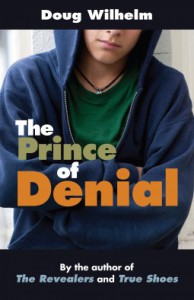





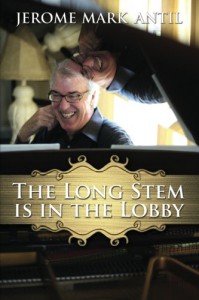
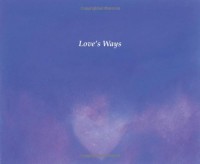
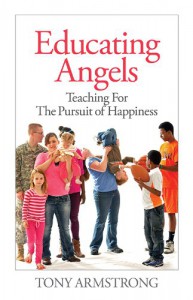
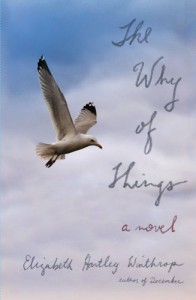

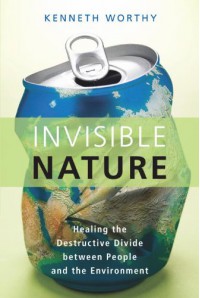
 1
1
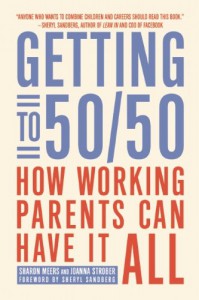

 Popular PsyBlog writer Jeremy Dean explores the science behind our everyday habits in his new book, Making Habits, Breaking Habits: Why We Do Things, Why We Don’t, and How to Make Any Change Stick (Da Capo Press, 978-0-7382-1598-3). Dean takes on common myths about forming and breaking habits, and explains why it may take twenty-one days to form a habit, or maybe forty, or maybe one hundred and twenty. Dean teases out the factors contributing to our habit-forming tendencies with a careful analysis of the studies that have examined the impact of intentions, actions, and will-power.
Popular PsyBlog writer Jeremy Dean explores the science behind our everyday habits in his new book, Making Habits, Breaking Habits: Why We Do Things, Why We Don’t, and How to Make Any Change Stick (Da Capo Press, 978-0-7382-1598-3). Dean takes on common myths about forming and breaking habits, and explains why it may take twenty-one days to form a habit, or maybe forty, or maybe one hundred and twenty. Dean teases out the factors contributing to our habit-forming tendencies with a careful analysis of the studies that have examined the impact of intentions, actions, and will-power. Mindfulness is chief among Jeremy Dean’s habit-kicking prescriptions, and it’s also a tool recommended by Christopher Kennedy Lawford for overcoming entrenched and damaging habits. In Recover to Live: Kick Any Habit, Manage Any Addiction (BenBella Books, 978-1-936661-96-1), Lawford explores a broad spectrum of dependencies—“The Seven Toxic Compulsions”—that fall under the umbrella of addictions. While he does share his personal experience with drug and alcohol dependence, this is not a memoir; it’s a readable reference book, filled with eye-opening statistics, pertinent research results, and quotations from some of the most distinguished minds in mental health today.
Mindfulness is chief among Jeremy Dean’s habit-kicking prescriptions, and it’s also a tool recommended by Christopher Kennedy Lawford for overcoming entrenched and damaging habits. In Recover to Live: Kick Any Habit, Manage Any Addiction (BenBella Books, 978-1-936661-96-1), Lawford explores a broad spectrum of dependencies—“The Seven Toxic Compulsions”—that fall under the umbrella of addictions. While he does share his personal experience with drug and alcohol dependence, this is not a memoir; it’s a readable reference book, filled with eye-opening statistics, pertinent research results, and quotations from some of the most distinguished minds in mental health today. In Break Your Addiction to Conflict: 12 Tools to Quiet the Mind (Snowday Press, 978-0-9858950-0-6), Nathan J. Snow broadens the definition of addictions even further than Lawford. According to Snow, a spiritual seeker and experienced meditation practitioner, most of our problems can be attributed to a single source: our attraction and addiction to conflict. Snow defines conflict as: “Any mental struggle in which our wishes run contrary to opposing demands.” He casts a wide net with this definition, and offers limited evidence to support his philosophy, relying more on axioms like “conflict is convenient” and “acceptance underpins serenity.”
In Break Your Addiction to Conflict: 12 Tools to Quiet the Mind (Snowday Press, 978-0-9858950-0-6), Nathan J. Snow broadens the definition of addictions even further than Lawford. According to Snow, a spiritual seeker and experienced meditation practitioner, most of our problems can be attributed to a single source: our attraction and addiction to conflict. Snow defines conflict as: “Any mental struggle in which our wishes run contrary to opposing demands.” He casts a wide net with this definition, and offers limited evidence to support his philosophy, relying more on axioms like “conflict is convenient” and “acceptance underpins serenity.” Those who truly seek change, however, may also need to look inside and really investigate their current mental and emotional status. That’s what Dr. Robin L. Smith has done in her latest book, Hungry: The Truth About Being Full (Hay House, 978-1-4019-4002-7). Dr. Robin, as she is known from her years as the host of a popular radio call-in show, was once a lot like the addicts described in the books above. Smith was always looking for more to satisfy her seemingly insatiable desires. Fame didn’t do it, and neither did fortune. The high from appearances on The Oprah Winfrey Show and a blockbuster book tour for her first book, Lies at the Altar, couldn’t last forever.
Those who truly seek change, however, may also need to look inside and really investigate their current mental and emotional status. That’s what Dr. Robin L. Smith has done in her latest book, Hungry: The Truth About Being Full (Hay House, 978-1-4019-4002-7). Dr. Robin, as she is known from her years as the host of a popular radio call-in show, was once a lot like the addicts described in the books above. Smith was always looking for more to satisfy her seemingly insatiable desires. Fame didn’t do it, and neither did fortune. The high from appearances on The Oprah Winfrey Show and a blockbuster book tour for her first book, Lies at the Altar, couldn’t last forever. Pop psychology itself takes a big hit in David Bedrick’s radical response to conventional approaches, Talking Back to Dr. Phil: Alternatives to Mainstream Psychology (Belly Song Press, 978-0-9852667-0-7). While the author agrees with the premise that unhealthy behaviors stem from underlying personal and interpersonal issues, he does not believe in the bootstrap approach to personal change. For instance, Bedrick holds that addictions stem not from personal flaws but from society’s failure to support the full expression of uncomfortable emotions like anger.
Pop psychology itself takes a big hit in David Bedrick’s radical response to conventional approaches, Talking Back to Dr. Phil: Alternatives to Mainstream Psychology (Belly Song Press, 978-0-9852667-0-7). While the author agrees with the premise that unhealthy behaviors stem from underlying personal and interpersonal issues, he does not believe in the bootstrap approach to personal change. For instance, Bedrick holds that addictions stem not from personal flaws but from society’s failure to support the full expression of uncomfortable emotions like anger.


